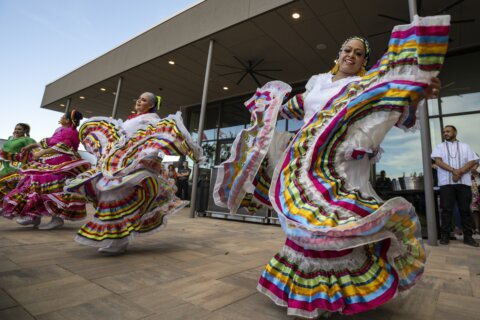From Baby Alive to Barbie, dolls are one of the world’s oldest toys, and one of America’s favorite gifts. But American dolls were not always been made with ethnically correct features.
Debbie Behan-Garrett is a doll enthusiast and founder of the DeeBeeGee’s Virtual Black Doll Museum. The museum features vintage, antique, modern and one-of-a-kind Black dolls.
Garrett grew up with white dolls because she said her mother would not purchase dolls that portrayed blacks in a negative light, which is how black dolls were usually portrayed in much of the South, where she was raised.
When she gave birth to her daughter in the late 1970s, she said went on the hunt for Black dolls.
“I wanted her to have a positive sense of self,” she said.
She said there were so many negative messages about Black people, about Black culture through the media, that she “wanted to counteract those messages just to let her know that she’s important, that she’s valued.”
The museum features antique dolls, dolls 80 years or older. Her oldest dolls date back to the 1880s. They are a pair of cloth dolls that are handmade by the grandchild of an abolitionist. She features vintage dolls from 1941 through 1960 and modern dolls from 1961 to the present. She also features one-of-a-kind dolls, dolls that can’t be found anywhere else.

Garrett said when antique Black dolls were produced in the United States in the late 1800s and early 1900s, “Many of them were white dolls painted brown, so you really didn’t see yourself in those dolls.”
Then, in the late 1940s, a Florida woman was disturbed when she witnessed Black children playing with white dolls outside of a post office. Sara Lee Creech went on a crusade to have a doll sculpted with the features of Black children. In 1951, during the vintage period, Ideal Toy Corp. came out with “The Saralee Negro Doll,” a doll with ethnically correct features. The doll is highly collectible.
Garrett has a personal blog called, “Black Doll Collecting.”
Garrett began collecting in 1991 and built her collection around a doll she purchased for her daughter’s 13th birthday. After realizing how fragile the doll was, Garrett decided to keep it for herself, a doll that she calls Jessica.
She said the goal of the museum is curate 1,000 dolls from her collection and from pictures donated from other collectors. So far she has 280 dolls published and 80 in the draft mode ready to be published.
Over the last 50 years, Garrett said, “Dolls have evolved.”
She says they are now representative of the culture. Garrett said the Barbie Fashionista collection has become more inclusive to represent people of different sizes, skin tones and hair textures.








